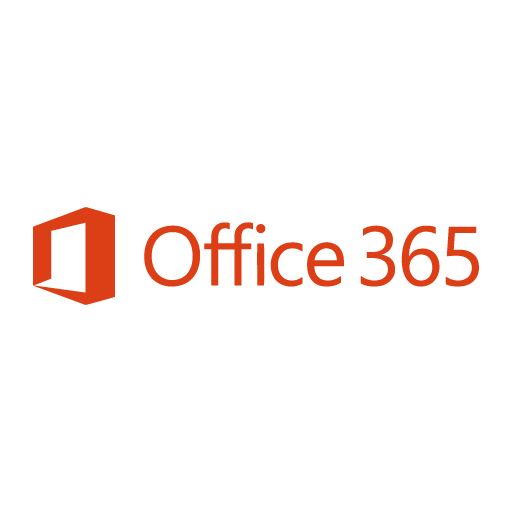How We Started A $40M Real Estate Investment Fund
Hello! Who are you and what business did you start?
My name is Greg Salley, I’m a founder and Managing Director of Equity Residences.
Equity Residences is a luxury real estate investment fund. We offer a way for accredited investors to own a portfolio of luxury vacation homes both for personal use and as an investment.
Our Equity Platinum Fund is raising $50 million to acquire twenty residences ranging from $1.5M to $4M, which are owned debt-free. We create value for investors in how we buy and upgrade the homes and investors also benefit from appreciation over time. We rent homes with income used to offset operating costs.
A minimum investment of $161,500 gives an investor access to our entire portfolio along with thousands of affiliate homes. Investors can stay at any home within the portfolio rent-free. We sell the homes after 10 to 12 years and distribute the profits back to the investors.
We currently have over 200 investors and $40 million under management.

What's your backstory and how did you come up with the idea?
My background is varied as an experienced investor, management executive, and consultant. I’ve worked in several industries spanning technology, automotive, media, and entertainment. However, my passions include real estate design and architecture, investing, and travel. Living in London, Paris, Nice, Sydney, and Singapore has helped me develop a global perspective.
I’ve invested in residential real estate for nearly twenty years with experience ranging from new construction, to remodels and distressed assets. After the 2008 financial crash, I began acquiring foreclosures in California and Nevada at deep discounts. Based on this success, I decided to launch an investment fund.
While researching target markets, I noted that second homes in vacation destinations were taking longer to recover from the financial crises than primary residences and could be acquired at deep discounts. Cap rates were also attractive with the right vacation rentals able to generate as much rent in one week as many long-term rentals might generate in a month. It was also an opportunity to capitalize on an emerging trend for the shared use of assets.
In parallel, Steve Dering and John Long had been discussing shared ownership and the use of distressed yachts. I suggested they consider shared ownership of vacation homes as yachts depreciate and have high operating costs while vacation homes appreciate and have income potential. We joined forces with investors able to receive a dividend by using the homes in addition to investment gains. Steve brought years of experience of shared use in the fractional resort industry, and we hired staff with experience at Auberge and Ritz Carlton.
Take us through the process of designing, prototyping, and manufacturing your first product.
We spent months editing our marketing materials and refining our business model. We obtained MLS data for multiple vacation destinations and plotted the data by development and street, adjusting for factors that drive value in the market. The moment a foreclosure or short sale came on the market, we could tell you the discount from the market peak, the current value, and how much our purchase price is below both. We once had a short sale under contract within 30 minutes when the listing agent priced it below the current market value.
Also, we evaluated the competitive landscape across the shared use luxury vacation market to both build a better mousetrap and learn from their mistakes. Those who failed in this space, typically, had a couple of characteristics. They either did not own the homes, instead tying them up with long-term leases, or they were leveraged with debt. We’ve avoided both of these pitfalls. Our legal and tax advisors were also important in structuring the Fund. They believed in us enough to put their fees at risk based on our success.

Describe the process of launching the business.
The ultimate validation of our concept was the first investor commitment, which was a fellow A.T. Kearney alumnus who I never met until years after he invested. We connected through our shared alumni network. He and his family have utilized their investment to travel all over the world, and we finally met a couple of years ago when we were both in Hawaii at the same time.
When launching an investment fund, much of the work is front-loaded while the payoff occurs years later. So far, the real estate portfolio in our first Fund has appreciated by over 60%. When we liquidate the portfolio, 80% of the gains will go to our investors and 20% to us as the fund manager.
We bootstrapped everything and made personal investments in the Fund. Getting the business off the ground required perseverance and listening and learning from our target market of accredited investors. It’s a chicken and egg situation where you need the investment funds to buy the homes and you need the homes to attract the investors.
Conversions for us means investors who write checks and refer their friends and family. All other metrics are an intermediate noise.
On top of that, we’ve invented our category with a true investment that provides shared use of luxury vacation homes. Shared use models have existed for a long time, but they’re typically an expense rather than an investment.
We started with no brand awareness or even awareness of our category. Because we are an investment, we do not have the large marketing budget that the expensive club models have. That makes referrals and word of mouth important. Once they do find us, our investors are passionate about their investment. I thrive off hearing the stories they have made with family and friends.
Our first Fund, the Equity Villa Fund, was focused on buying homes at depressed prices, renovating them, and making sure we created value for our investors by keeping our fees low and returns high. We keep fees low by using rental income to offset operating costs.
The biggest lesson was to just get started. We spent months editing our marketing materials and refining our business model. However, the business didn’t take off until I booked a flight to Hawaii, put some homes under contract, and discussed the opportunity with whoever would listen. Our investors helped us refine our marketing message and business model much better than we could on our own.
We moved our second Fund, the Equity Platinum Fund, more upscale based on feedback from accredited investors we spoke with. We consistently heard that we had the best mousetrap in terms of our business model, but they wanted an even more luxurious portfolio. The Equity Platinum Fund is raising $50 million to acquire a portfolio of twenty luxury vacation homes ranging from $1.5 million to $4 million in value.
Since launch, what has worked to attract and retain customers?
It has been more of a gradual progression rather than a magic bullet. Our biggest challenge continues to be brand and category awareness. In the early days of Equity Residences, we tapped into our networks to find investors. Referrals from our current investors are also an important source of new investors for us.
Listen to and learn from your target customers and adapt your business to fit their needs. Realize that everything will take longer than you initially expect and be sure to have good legal and tax advisors.
As we gradually grew our marketing budget, we invested in new tools. In 2017 we hired a web design firm that worked with Four Seasons to create our website. In 2018 we invested in HubSpot, a platform that became our marketing, sales, and customer service platform. Having a single source of sales and marketing data has allowed us to refine our marketing and sales funnels and raise more funding.
In 2019, right before the pandemic, we invested in expanding our SEO efforts and launched an online ad campaign. We are already seeing a pay-off from all of these initiatives in terms of increased lead growth, website conversions, and better lead follow–up process.


Social media has not been a significant lead driver for us. We tried a Facebook ad campaign in 2017- 2018 and quickly learned that, while we got a large number of new leads, up to 40 a day, what matters the most in our line of business is quality, not quantity. We can add 3,000 new leads who are not in a position to invest in a portfolio of luxury vacation homes and not convert them, or we can add 3 leads who understand the business model and have the cash, and suddenly our ROI is much better.
Ultimately, conversions for us means investors who write checks and refer their friends and family. All other metrics are an intermediate noise.
Since we are in a niche business that combines investment with a hospitality aspect, partnerships with industry publications like Sherpa Report provide a means of comparison. People who are considering luxury vacation home investment read the report and reach out to explore our business model. They are sophisticated investors who have the means to expand their portfolios with luxury vacation homes and they desire a cash preservation play which we provide for them.
How are you doing today and what does the future look like?
We continue to grow and expand. We launched our second real estate investment fund in 2016 and began an international push by launching locations in Mexico, Italy, Dominican Republic, and Costa Rica in 2018.
We eventually plan to have a collection of real estate investment funds that span different customer segments and geographies. We’re also looking at opportunities for development projects.
Through starting the business, have you learned anything particularly helpful or advantageous?
In hindsight, I would have grown our team sooner. When you bootstrap a business, you must wear multiple hats simultaneously. We could have grown faster had I offloaded some activities sooner. The team we have now is one of our most valuable resources.
One item we were blindsided by was changing local regulations. We obtained written approval from a town in Florida for short-term occupancy use only to find the town changed their position on short-term occupancy after we acquired a home and were in the process of remodeling it. Fortunately, we were able to sell for a modest gain.
What platform/tools do you use for your business?
We use HubSpot CRM to track and execute our marketing and sales.
Since our investors come from all corners of the United States and international locations, we use Zoom and Uberconference to familiarize them with our portfolio and operational procedures.
We manage portfolio bookings and centralize calendars through MyVR, a platform specifically designed for hosts and bill.com for payment processing.
What have been the most influential books, podcasts, or other resources?
I would say a general curiosity to learn, grow, and explore. I listen to TED talks and recently read Outliers by Malcolm Gladwell.
Advice for other entrepreneurs who want to get started or are just starting?
Just get going. Listen to and learn from your target customers and adapt your business to fit their needs. Realize that everything will take longer than you initially expect and be sure to have good legal and tax advisors.
Are you looking to hire for certain positions right now?
We are interviewing for a part-time marketing person who can help our marketing director to achieve new heights and take the company to a new level of marketing excellence as well as customer experience. We‘re also adding to our operations team.
Where can we go to learn more?
If you have any questions or comments, drop a comment below!

Download the report and join our email newsletter packed with business ideas and money-making opportunities, backed by real-life case studies.

Download the report and join our email newsletter packed with business ideas and money-making opportunities, backed by real-life case studies.

Download the report and join our email newsletter packed with business ideas and money-making opportunities, backed by real-life case studies.

Download the report and join our email newsletter packed with business ideas and money-making opportunities, backed by real-life case studies.

Download the report and join our email newsletter packed with business ideas and money-making opportunities, backed by real-life case studies.

Download the report and join our email newsletter packed with business ideas and money-making opportunities, backed by real-life case studies.

Download the report and join our email newsletter packed with business ideas and money-making opportunities, backed by real-life case studies.

Download the report and join our email newsletter packed with business ideas and money-making opportunities, backed by real-life case studies.























